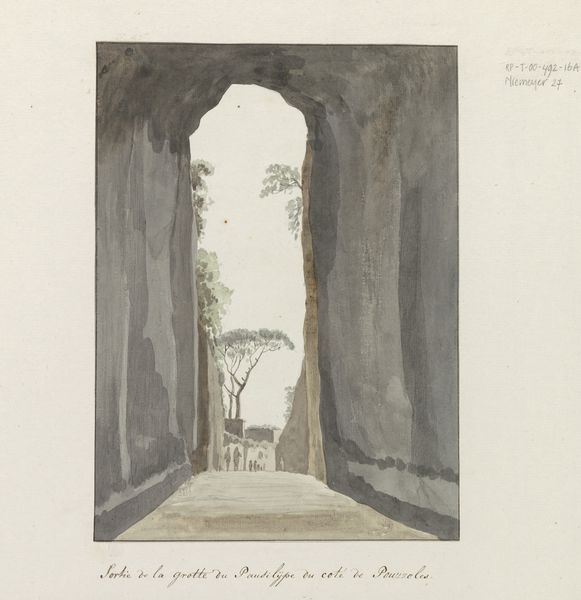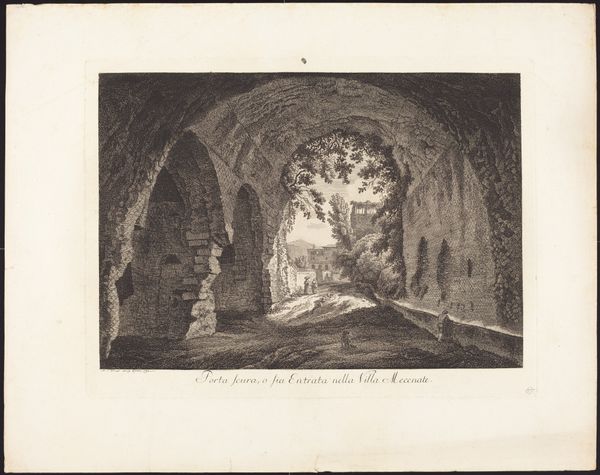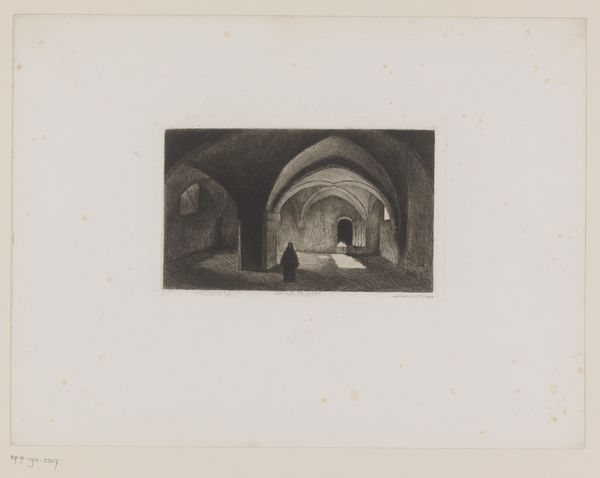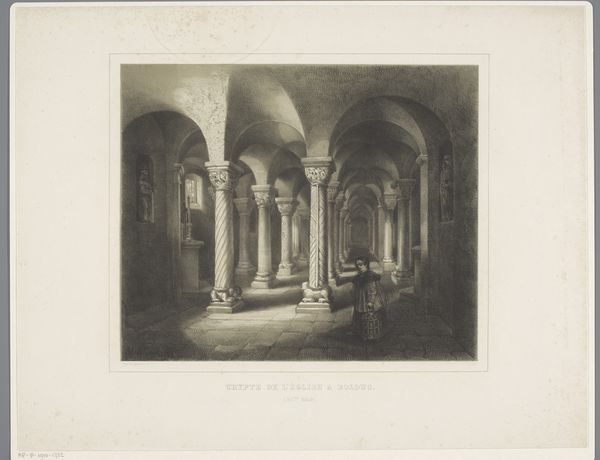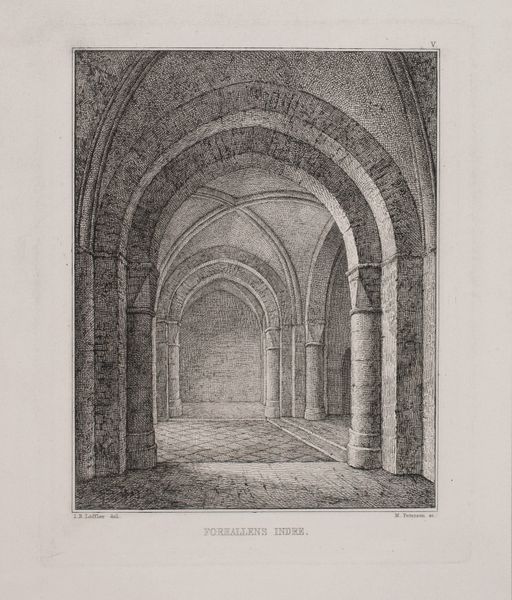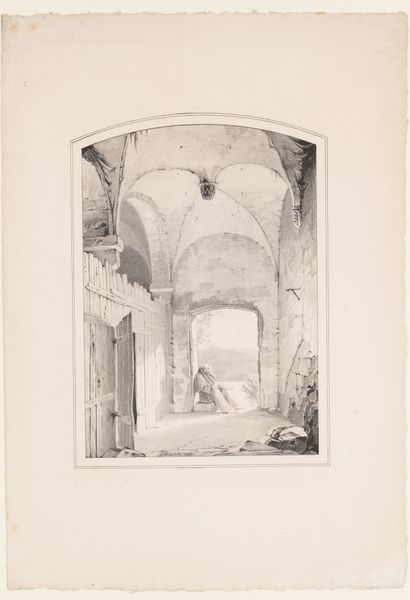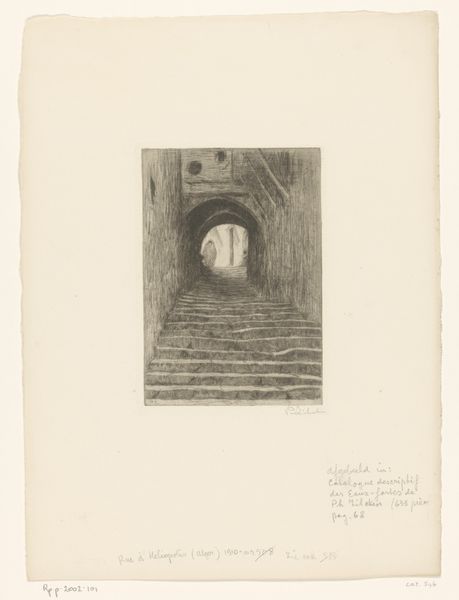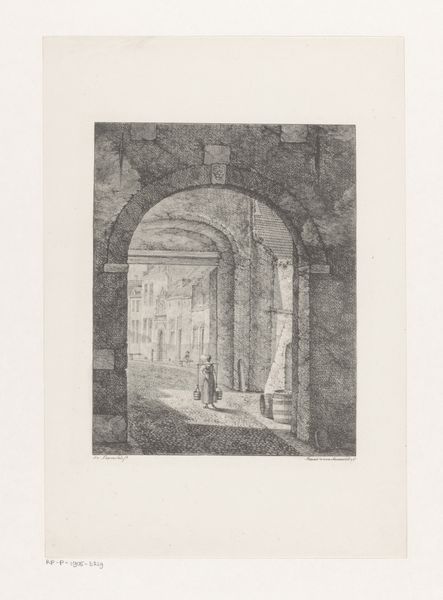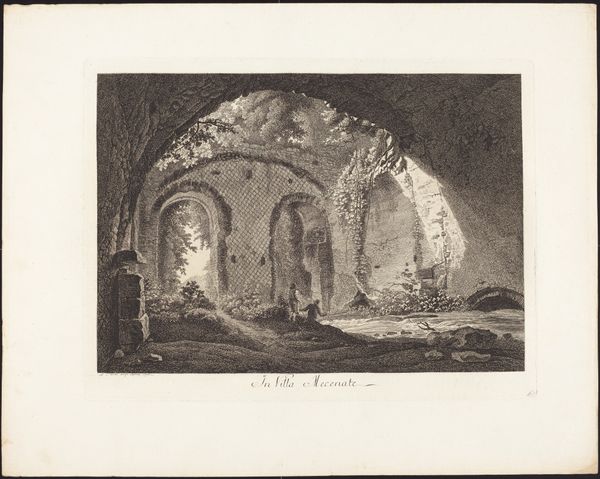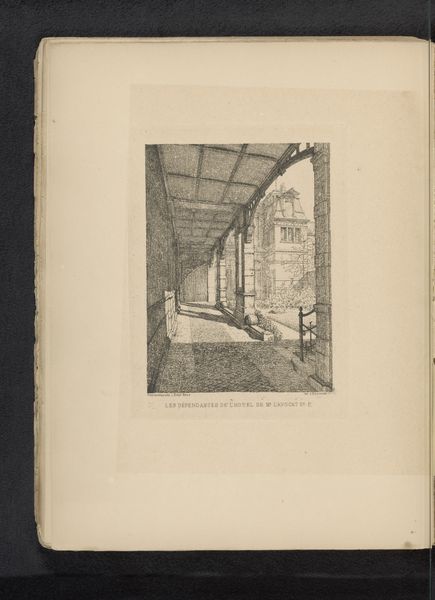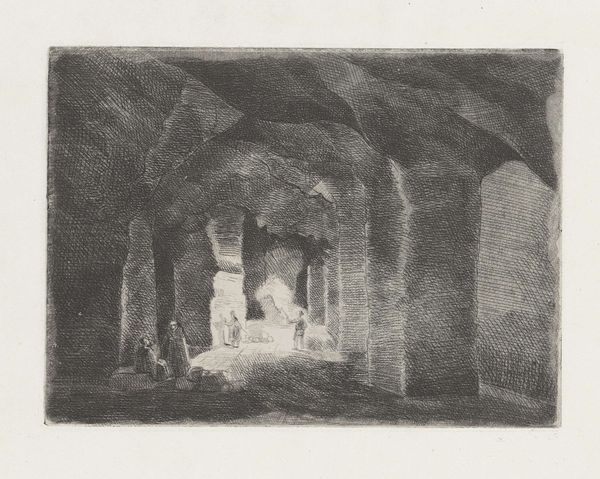
Ingang van grot Crypta Neapolitana (of Grotta di Posillipo) aan de kust van Pozzuoli 1778
0:00
0:00
drawing, tempera, ink
#
drawing
#
neoclacissism
#
tempera
#
landscape
#
ink
Dimensions: height 244 mm, width 183 mm
Copyright: Rijks Museum: Open Domain
Editor: So, this is "Ingang van grot Crypta Neapolitana (of Grotta di Posillipo) aan de kust van Pozzuoli" by Louis Ducros, made in 1778. It's an ink and tempera drawing. I'm struck by how dark and almost oppressive the tunnel feels, but then there’s that small burst of light and tiny figures in the distance. What draws your eye when you look at it? Curator: What interests me here is the way Ducros uses such mundane materials – ink and tempera – to depict this grand architectural space. The drawing highlights not just the grandeur of the Crypta, but also the labor required to create such a structure. Think of the social context: Who built this tunnel? What was the process like? Editor: That’s a perspective I hadn’t considered! I was focused on the picturesque view, the romantic idea of this ancient tunnel. But you're making me think about the physical labor involved. Curator: Exactly! And look at the stark contrast between the rough, dark tunnel and the delicate washes of tempera. This contrast could reflect the artist’s own tension between aesthetic beauty and the harsh realities of production and construction during that period. How does understanding the work through labor and materials change your initial impression? Editor: It makes me think about the social hierarchies involved. Ducros, as an artist, is engaging with a space made possible by the labor of others. It layers a whole new level of meaning onto what I initially saw as just a pretty picture. I now perceive its connection to labor. Curator: Precisely. We move beyond the purely aesthetic and into questions of social and economic dynamics, forcing us to examine how the means of artistic representation intersect with real-world conditions of production. Editor: I see what you mean. I appreciate learning about the art historical importance of an artwork, while thinking of it in social, material and economic terms. Thanks! Curator: My pleasure! Examining the materials and the context behind their use opens new pathways for understanding and appreciation.
Comments
No comments
Be the first to comment and join the conversation on the ultimate creative platform.
